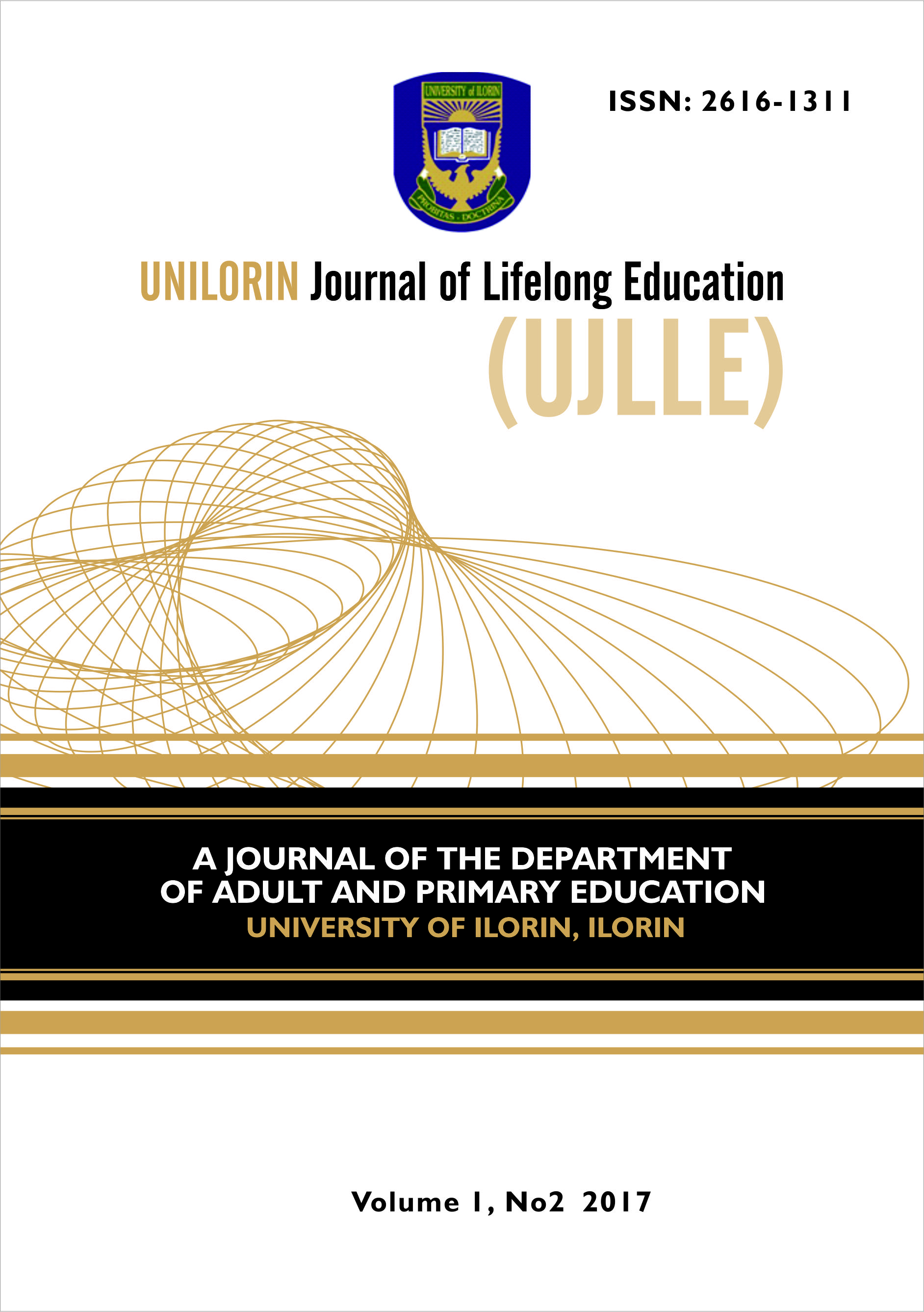PUBLIC PRIMARY SCHOOL TEACHERS AWARENESS AND UTILIZATION OF BEST PRACTICES IN KWARA STATE PRIMARY SCHOOLS
Keywords:
International best practices, Teachers' awareness, Teachers’ utilizationAbstract
The study examined public primary school teachers’ awareness and utilization of international best practice in Kwara State. The descriptive survey design was adopted for this study and 300 public primary school teachers were sampled. A questionnaire was used to obtain information from the respondents after the instrument was tested for reliability. The reliability value of 0.79 was obtained from the instrument. Two research questions were put up and answered with mean score. The findings of the study revealed that public primary school teachers were aware of international best practice ( =2.54) but they did not put them into practices in their classroom ( =2.34). Based on these findings, the researcher recommended that seminar and workshop should be organized for primary school teachers by government so as to encourage them to make use of international best practices in the course of discharging their duties. Also, government should provide instructional facilities that will enable teachers to create good atmospheric conditions for pupils.
References
Daniel, H. & Bizar, M. (1998). Methods that matter: six structures for best practices classrooms. York,ME: Stenhouse.
Friedman, T. (2006). The world is flat. New York: Farrar, stratus and Giroux.
MacAulay, D. J. (1990). Classroom environment: A literature review. Educational Psychology, 10 (3), 239-253.
NC Teacher (2006). Best Practices: A Resource for Teachers. Department of Public Instruction. Public Schools of North Carolina.
Savage, T.V. (1999). Teaching self-control through management and discipline. Boston: Allyn and Bacon.
Stewart, S. C. & Evans, W. H. (1997). Setting the stage for success: Assessing the instructional environment. Preventing School Failure, 41 (2) 53-56
Sulberman, M. (1996). Active learning: 101 strategies to teach any subject. Des Moines, IA: Prentice-Hall.
Walker, H. M., Colvin, G., & Ramsey, E. (1995). Antisocial behaviour in school: strategies and best practices. Pacific Grove, CA: Brooks/Cole Publishing Company.
Walker, H.M. & Walker, J. E. (1991). Coping with noncompliance in the classroom: A positive approach for teachers. Austin, TX: Pro-Ed.
Tomlinson, C. (2003). Differentiation in practices: A practices guide for differentiating curriculum. Alexandria, VA: ASCD.
Weinstein, C. S. (1992). Designing the instruction environment: Focus on seating. Boston: Allyn and Bacon
Zemelman, S., Daniels, H., & Hyde, A. (1998). Best practice: New standards for teaching and learning in America’s schools 2nd edition. Portsmouth, NH: Heineman
